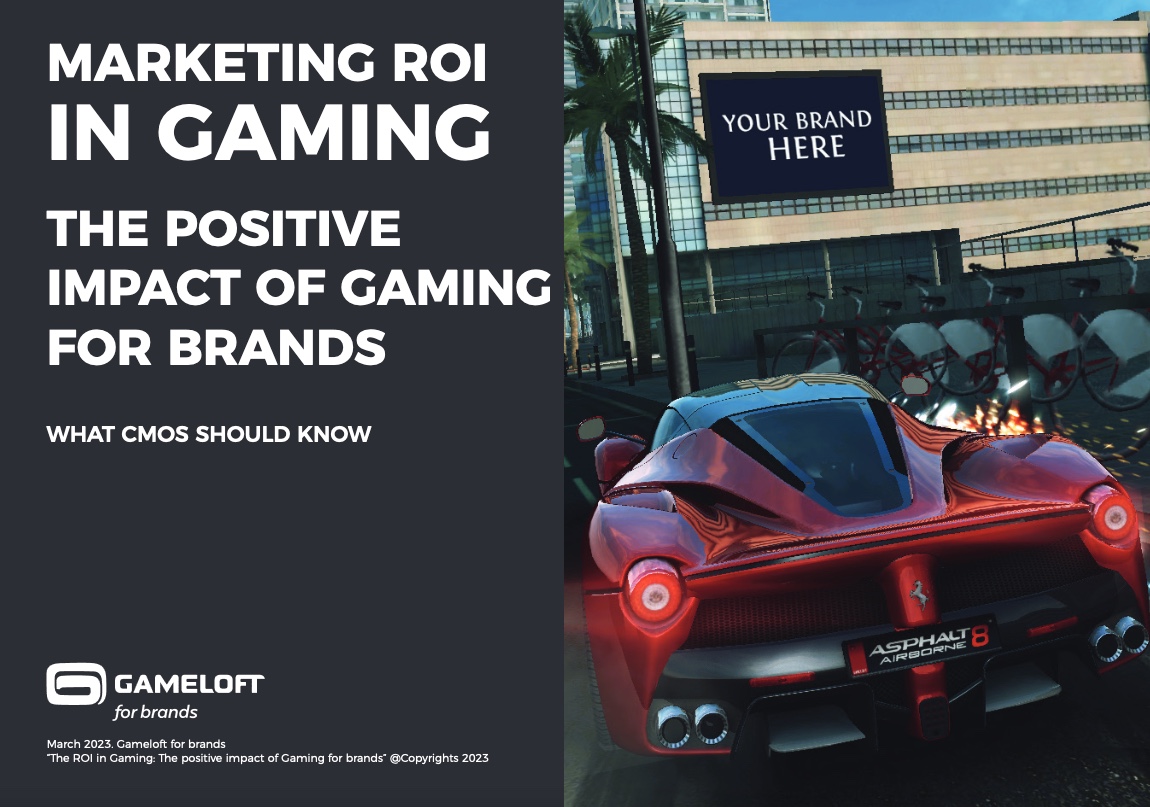Scroll Media reveals the new Gameloft for brands industry whitepaper – the ‘ROI In Gaming: The Positive Impact of Gaming For Brands’

A new research study on gaming advertising, conducted by Gameloft for brands and incorporating Oracle Moat measurement data, is being supported by Scroll Media to show the effectiveness of gaming advertising and offers a new KPI to help brands assess their marketing ROI when running video-game-based activations. Scroll Media has the rights to sell Gameloft in-game advertising inventory across the ANZ market.
Video games are governed by their own rules and are the only medium where the user actively participates in creating their experience, leading to strong engagement and attention. Over the past three years, Gameloft has invested in several studies with industry leaders in toys, automotive, FMCG, entertainment, high tech, and energy to assess the marketing ROI that brands can expect from gaming. These studies provide evidence of the strong impact on brand awareness and sentiments enabled by the emotions and positive state of mind that gaming generates.
Says Jane Ormsby, MD and founder of Scroll Media: “The study reveals what every CMO should hear. Generating positive emotions, gaming offers a unique ‘positive moment’ for brands to engage their audience, significantly impacting brand attractiveness, attachment, and love. The study calls this ‘brand likeability.’ ”
Says Alexandre Tan, executive vice-president, brand partnerships and advertising at Gameloft for brands: “Reaching an audience in a positive state of mind, highly engaged with the media they’re consuming, is why gaming is so unique. While traditional advertising is often passive and intrusive, gaming allows players to be part of the narrative, and brands to actively engage with their audience and build meaningful connections.”
This study used an approach inspired by the RCQ* (Reach, Cost, and Quality) methodology to define a brand-new KPI that takes into consideration the quality of the gaming moment.
Entitled the “Gameloft Quality Score,” it aims to measure the effectiveness of a given advertising campaign by analyzing the synergy between the quality of the context in which the campaign is delivered and the creative assets used to deliver it. This is done by leveraging the traditional measures of exposure and engagement that marketers are familiar with.
Says Adam De Roma, head of sales for Australia, Scroll Media: “The study explains the relationship between the contextual environment of a campaign and advertising effectiveness, and how to more effectively measure its impact on brand affinity and return on investment.”
Scroll Media has been running Gameloft campaigns with many Australian brands and media agencies for over three years and sees growth in this category.
Says Ormsby: “In-game advertising offers a highly qualitative medium for brands and an effective consumer touch point, so we see enormous growth continuing in this exciting category.”
With USD $196.8 billion in revenue and 3.2 billion players worldwide in 2022, dedicating more than 8 hours each week to digital play, video games have become the number one entertainment vertical, surpassing the film and music industries combined. Gaming is now a cross-generational media.
Says De Roma: “We’re past the age-old stereotype of gamers being solely teenage boys. Brands are now reaching all generations through gaming!”
Gameloft for brands’ white paper “Marketing ROI in Gaming” is available here.
*The RCQ (“Reach, Cost, Quality”) methodology was first documented by Dr. Thomas Bauer, Dr. Tjark Freundt and Ingeborg Molden Hegstad in “Retail Marketing and Branding, 2nd Edition” by Jesko Perrey and Dennis Spillecke (2013, John Wiley & Sons Publications)
